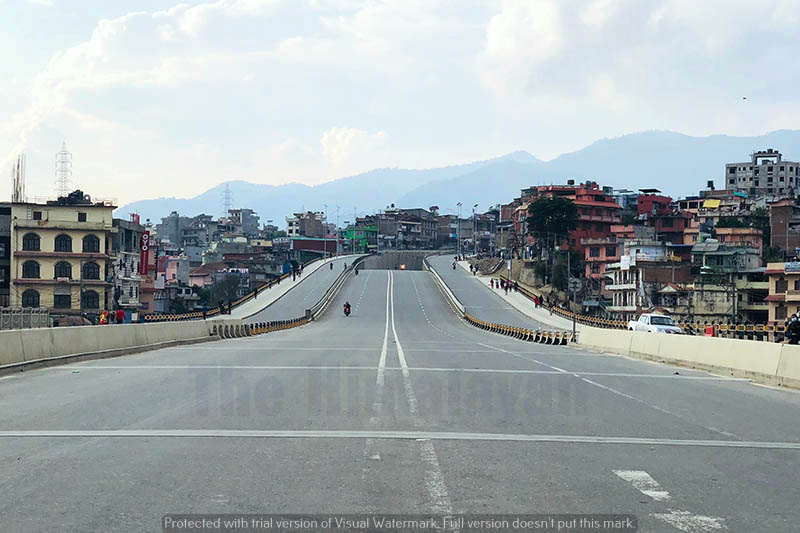Lockdown lowers pollution levels; gifts all clean air, blue skies
Kathmandu
The COVID-19 pandemic has shut industrial activity, cancelled flights and restricted vehicular movements, slashing emissions and air pollution around the world. Nepal has also seen something to be positive about when it comes to air quality since the government imposed a lockdown on March 24.
According to research carried out by the Global Institute for Interdisciplinary Studies, the PM2.5 concentration in Kathmandu can be seen to have declined since. “Prior to the lockdown, the average mean of PM2.5 concentration was 135.4 µg/m3; after the lockdown, it has gone down to 108.3µg/m3,” says Dr Uttam Babu Shrestha, Director at Global Institute for Interdisciplinary Studies.
With only a handful of vehicles plying on the streets and frequent rains in the past few weeks, the air seems visibly cleaner. As of April 28, the Air Quality Index (AQI) averaged around 59 to 88 µg/m3 in Ratnapark as per Department of Environment Air Quality Monitoring.
Considering the fact that in Kathmandu, AQI levels are usually a harmful 150µg/m3 a day, it seems as if the denizens are breathing fresh air. Yet the level of pollution hasn’t gone down as was expected by the experts.
Anything above 25 µg/m3is deemed unsafe by the World Health Organisation. “We had expected PM2.5 concentration to go below 60 to 70µg/m3,” admits Bhushan Tuladhar, Chairperson, Environment and Public Health Organisation. In Biratnagar, for example, the concentration has gone down by a mere 13 µg/m3.
With some of the world’s most polluted cities like Delhi seeing unprecedented decrease in air quality, why is it that Nepal hasn’t seen such drastic changes? Tuladhar and Dr Shrestha cite the increase in crop burning, mostly in the Tarai as the main reason. Farmers in the southern plains have resorted to stubble burning as they cannot transport and sell farm residues owing to the ongoing lockdown. With the border sealed, they have not been able to sell wheat straws to Indian buyers this year, and have instead turned to stubble burning.
Tuladhar says crop burning is one of the main reasons for toxic air and a prime reason for increasing PM2.5 concentration along with vehicular emissions.
“And many people are staying home, cleaning houses, and since waste management has been difficult, many are burning waste in their own neighbourhood,” adds Dr Shrestha. This time of the year is also when the nation experiences a spike in forest fires.
Urban forestry, open spaces and clean ponds and lakes are almost nonexistent in the country.
“Roadside trees are considered to reduce PM2.5 concentration by 24 per cent. But trees are rarely seen,” mourns Tuladhar.
As per IQAir’s Air quality and pollution city ranking of April 28, Kathmandu ranks eighteenth among most polluted cities.
“Pollution can be reduced, and as Nepal has seen it can be achieved,” pointed out Tuladhar talking about the decline in air pollution around the Valley from 2002 to 2007. In March 2002, the Industrial Promotion Board decided to ban brick kilns that use outdated bulls trench kiln technology after denizens of Bhaktapur rioted against pollution.
“The way people commute should be considered and we should stick to maintain this air quality and try to lower it further,” advises Dr Shrestha.
A version of this article appears in e-paper on April 29, 2020, of The Himalayan Times.






